If you feel lost when it comes to teaching composition, singing can provide an easy starting point, says Sue Nicholls...
Songs provide the most natural and spontaneous form of music-making, and should be exploited to the full in the primary classroom. Not only will a song energise the start of any music lesson but, importantly, it can also provide a wonderful springboard into composition - a strand of music education that many non-specialists find the hardest to deliver.
(From the playground song book published by music education supplies)
Cross curricular links
Music: duration (pulse and rhythm)
PSHE: working as a team
Numeracy: counting, time vocabulary
PE: hand-eye coordination
MFL: substitute numbers counted in French, German, Japanese etc.
This song is free to download as an audio file from mesdirect.com
Time’s up
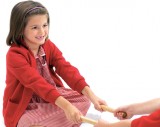 One, two, three, four!
One, two, three, four!
Wipe the table, mop the floor,
Five, six, seven, eight!
Wash the dishes, dry the plates,
Second, minute, hour, day,
Fill the kettle, don’t delay!
Tick, tock! Time’s up!
Pour the tea and have a cup!
Learn this jaunty song; it will be popular both as part of the class singing repertoire and in the playground. To learn the clapping pattern, group the children in twos and then pair the couples up to make a circle of four, with original partners facing each other.
Now teach the groups two different clapping routines to help them get started:
1 An easy pattern that lasts for one line of the song. Clap opposite partner’s hands, clap own hands, clap opposite partner’s hands, clap own hands.
2 A slightly more difficult pattern that lasts for two lines of the song Clap opposite partner’s hands, clap own hands, clap opposite partner’s hands, clap own hands.Clap neighbour’s hands, clap own hands, clap neighbour’s hands, clap own hands.
To extend this activity, ask the children to compose new patterns. These need not be exclusively clapping, but could involve stamping, tapping knees or nodding heads. The aim is to achieve patterns that are rhythmically accurate and mark the pulse.
(Taken from the song stack and the playground song book published by music education supplies)
Cross curricular links
Music: timbre (body percussion,vocal sounds), creating scores
Numeracy: evolving patterns
PE: inventing movement sequences
Art/ICT: colour grids
This song is free to download as an audio file and as a notated copy from mesdirect.com
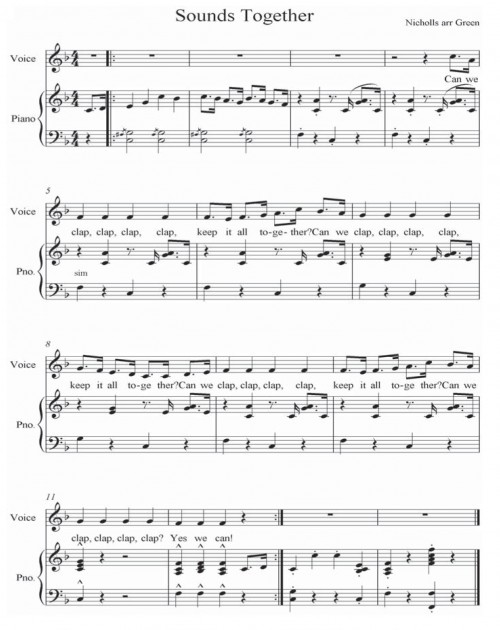
This simple action song works well with lower KS2 children who will quickly assimilate the pattern of changing actions and sounds.
Verse 1: clap, clap, clap, clap!
Verse 2: clap, clap, clap, stamp!
Verse 3: clap, clap, stamp, click!
Verse 4: clap, stamp, click, Whooo!
This evolving pattern can provide a ‘scaffold’ for composition by using instrumental sounds to replace the body percussion of the original. This version (see right) is played by adrum [tap], a guiro [scrape], bells [ring] and maracas [shake]:
Divide the class into groups of four. Give each group a blank grid and four different instruments and ask them to create a piece that models the pattern in the song. A performance could include four sung verses incorporating the new sound patterns, or simply focus on playing the grid ‘score’.

To extend this idea into a PE lesson, you could invite children to substitute actions e.g. jump, hop, skip, twist. You could also link music-making to Art and Design or ICT by introducing colours and changing the words accordingly: Paint it red, red, red, red, keep it nice and even! Design and colour 4 x 4 grids to use as musical scores or create them using ICT software.

(An african stick passing song game played in a circle)

Cross curricular links
Numeracy: factors, problem solving
Geography: Africa
Obwisannah sah, nah,
Obwisannah sah,
Obwisannah sah, nah,
Obwisannah sah,
This traditional African stick passing game can be as complex or simple as you wish and can develop into sophisticated cross rhythms. Sit in a circle, with two sticks per singer. Start by learning the song and, when this is established, introduce the stick-tapping pattern outlined below.
Stick-tapping pattern
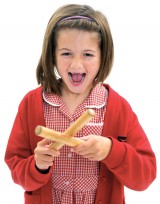 Obwisannah has 16 beats in total and 4 beats to each line, so repeat the actions below four times throughout the course of the song.
Obwisannah has 16 beats in total and 4 beats to each line, so repeat the actions below four times throughout the course of the song.
Beat 1: Pick up sticks
Beat 2: Tap together
Beat 3: Tap together again
Beat 4: Lay sticks down
Moving on
Once they’re familiar with the easy version, children can try passing the sticks.
Beat 1: Pick up sticks
Beat 2: Tap together
Beat 3: Tap together again
Beat 4: Lay sticks down (in front of your neighbour sitting to your left)
Now try joining these two patterns together to make an 8-beat stick-game.
To take this activity into composition, remind the children of factors and how they work numerically. This song has 16 beats in total and so far they have been sticktapping in groups of 4 beats; 4 being a factor of 16. If the song is sung through three times, the total number of beats is 48, a number which has many factors. Ask the children to work in small groups to invent a stick-passing game based on a factor of 48, choosing 2, 3, 6 or 8. Encourage them to be inventive e.g. rolling the sticks, using high and low levels, experimenting with directional changes of clockwise and anticlockwise etc.
There are many songs that can be used a starting points for composition. Register at http://www.singup.org and visit the ‘Activity Notes’ on the Song Bank menu. Every set of notes provides ideas for development, and some also list ideas for composition in the ‘Extension’ section.
Keep singing and keep composing!
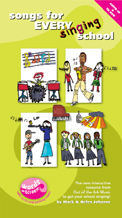 Don’t forget the lyrics!
Don’t forget the lyrics!
Children can sing along to their favourite Out of the Ark Music tracks with Words on Screen, the company’s clever new resource. The software allows users to project lyrics from the ‘Songs for EVERY…’ songbooks onto any screen, which are then highlighted in synch with the music. Teachers can pause, skip and repeat the songs and choose to sing with backing or vocal tracks. Words on Screen also gives you a choice of fonts and background colours suitable for different age groups or those with learning difficulties. What a reat way to promote singing at your school. outoftheark.co.uk
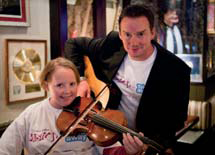 Practice-athon makes perfect!
Practice-athon makes perfect!
Music stars, including Russell Watson and Gary Barlow, are urging everyone to pick up an instrument and play their part in raising money for children’s cancer charity CLIC Sargent.
They’re supporting a unique partnership between Arts Council England’s Take it Away initiative and CLIC Sargent’s Practice-a-thon Music campaign. People of all ages and abilities are being encouraged to get sponsored to practise their musical instruments and help raise money for children with cancer.
For extra inspiration, participants have access to a series of free and exclusive online tutorials of hit songs including Take That’s Back for Good and legendary Oasis hit Wonderwall.
To sign up to play your part for children with cancer visit clicsargent.org.uk/music.
Sounds good
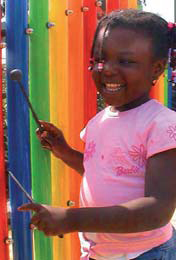 MES has just produced their new 2009/2010 catalogue, full of great new products that have been developed from ‘teacher ideas’. Whether you want to take the classroom outdoors with the new ‘Outdoor Music Frames’ or are looking for ‘Drumming packs’ they have the range and price to suit you. If you haven’t received your new catalogue, why not call for your copy on 08450 264 703 or visit mesdirect.com
MES has just produced their new 2009/2010 catalogue, full of great new products that have been developed from ‘teacher ideas’. Whether you want to take the classroom outdoors with the new ‘Outdoor Music Frames’ or are looking for ‘Drumming packs’ they have the range and price to suit you. If you haven’t received your new catalogue, why not call for your copy on 08450 264 703 or visit mesdirect.com
Why Boarding School Fiction Feels Comfortably Familiar
Ace-Classroom-Support
Teaching Mandarin via video conference
Languages
Should you let educational researchers into your classroom?
Ace-Classroom-Support
Becoming a teaching school
Ace-Heads
